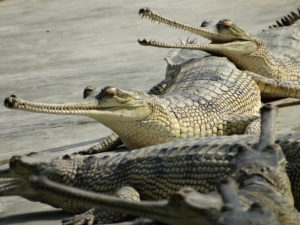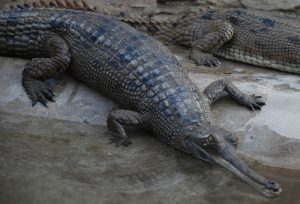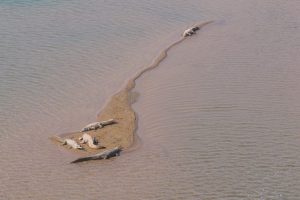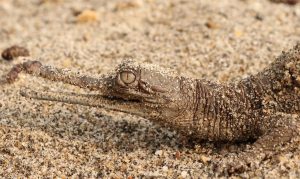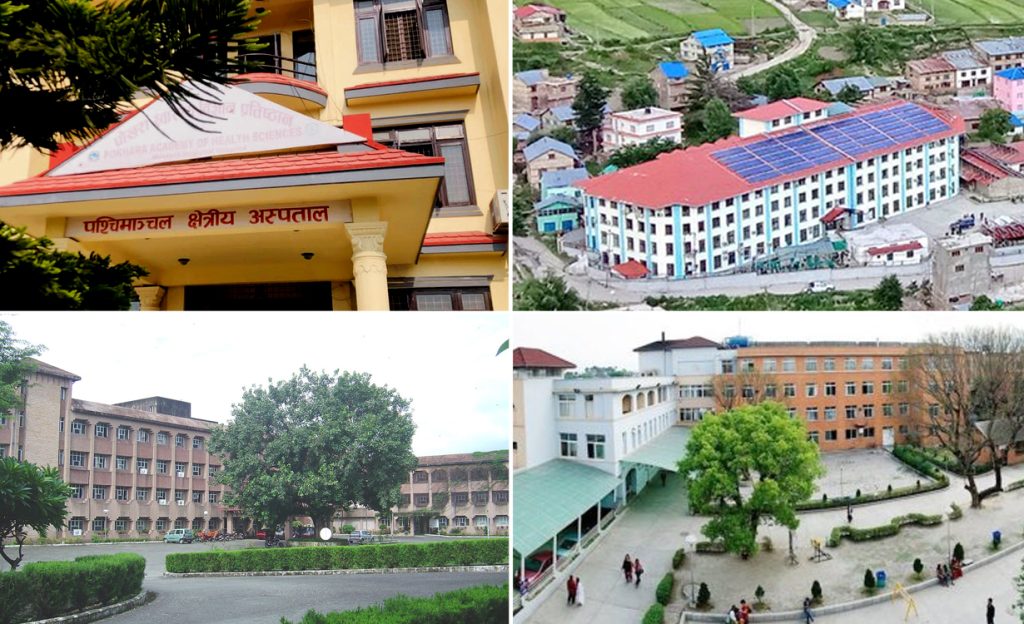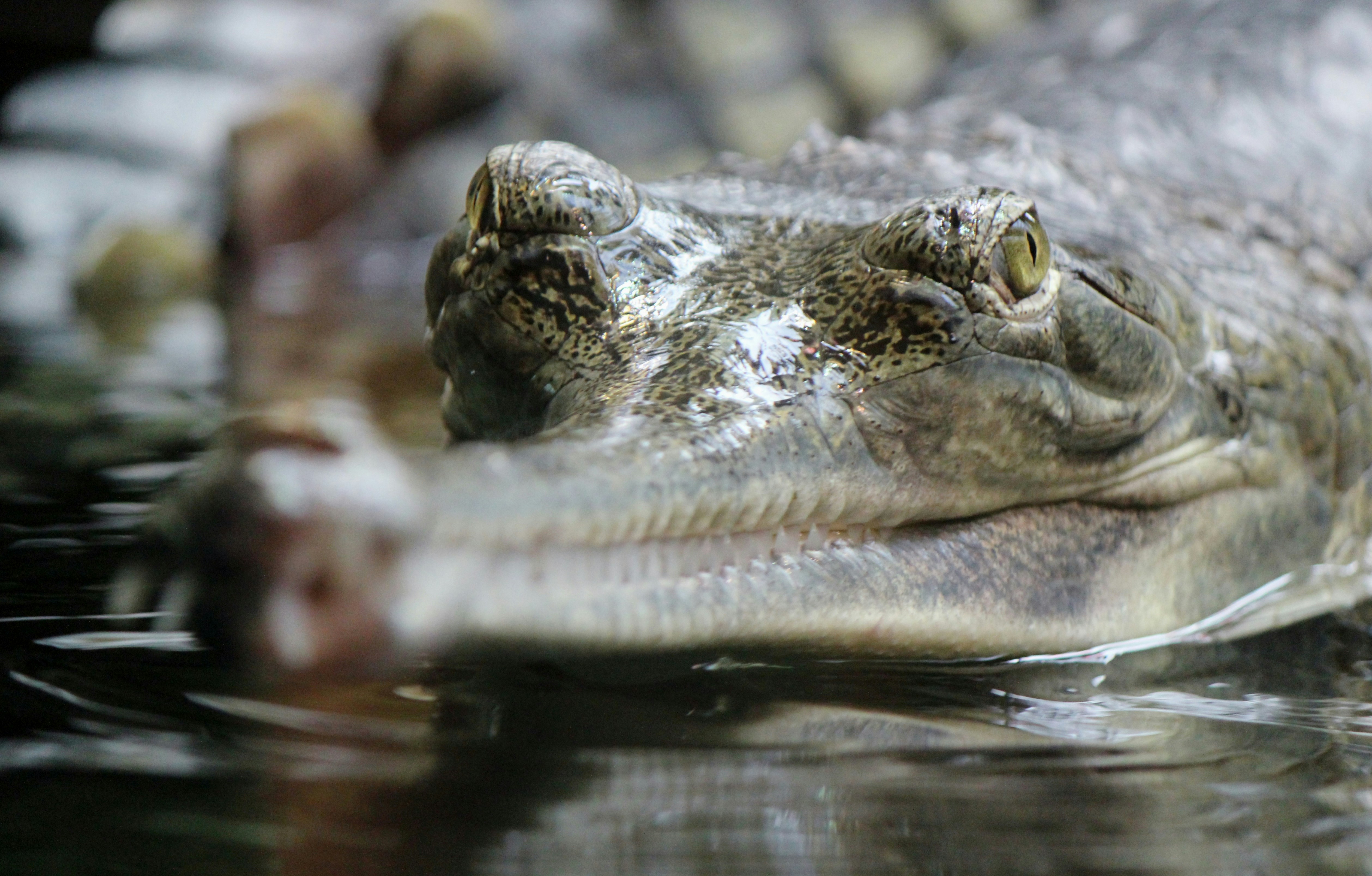
The start of 2024 has brought some good news, tempered with warnings, for Nepal’s critically endangered gharials, the fish-eating crocodiles with comically bulbous snouts.
Officials at Chitwan National Park, the country’s prime habitat for gharials, one of two crocodile species found in Nepal, say their population increased by around 11 per cent compared to the previous year.
Park officials counted 265 individual gharials in the Rapti and Narayani rivers that flow through Chitwan, up from 239 the previous year.
“This is indeed encouraging news as we concentrate our efforts towards saving the crocodiles,” said Ashish Bashyal, a researcher with the organisation Biodiversity Conservancy Nepal. “While it is nice to celebrate the achievement, we must not forget that the gains could be temporary and the population could decline at any time if threats are not addressed in time.”
Bashyal echoed those concerns in a recently published study in the journal Reptiles & Amphibians, which documents the distribution of the crocodiles throughout Chitwan National Park. The study, which looked at gharial populations between 2017 and 2022, found that although the number of crocodiles increased during the period, their population may not be evenly distributed, pointing to various factors that may be deterring them from choosing a certain habitat even when it’s the kind of habitat in which they would thrive.
Conservation challenges
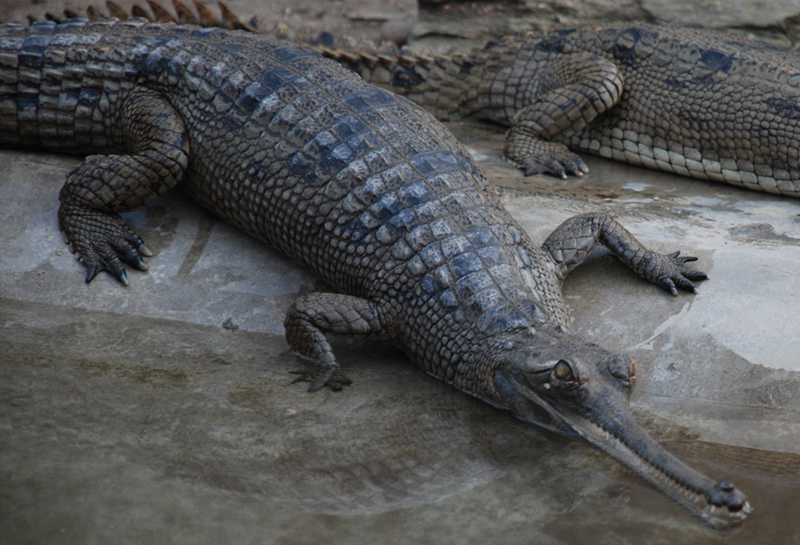
“We conducted annual winter population surveys for gharial in Chitwan between 2017 and 2022, during which we also looked at the availability of riverbanks and basking preferences,” study lead author Bed Bahadur Khadka, from Chitwan National Park’s Gharial Conservation and Breeding Center, said.
Gharials, famous for their narrow snouts that balloon into a bulbous tip, once roamed the Ganga River and its tributaries that flow through the plains of Nepal and India. Today, the crocodiles’ range is limited to only a few rivers in the Ganga Basin, with fishing, changes in river flow, infrastructure development, and poaching posing the main threats to the species.
As part of the study, Khadka, Bashyal and colleague Phoebe Griffith, from the Leibniz Institute of Freshwater Ecology and Inland Fisheries in Germany, went out on traditional dugout canoes to count gharials on the banks of the Rapti and Narayani rivers. (The section of the latter that runs through India is known as the Gandak.)
These rivers form the western and northern boundaries of Chitwan National Park, best known as home to Bengal tigers and greater one-horned rhinos.
“We conducted the surveys in winter [December and January] as the gharials come out of the river to bask in the sun,” Bashyal said.
Since 1978, Nepal has run a program to raise gharials in captivity and release them to supplement the wild population. As part of the effort, officials in Chitwan and Bardiya national parks collect eggs from riverbanks, provide a suitable environment for them to hatch in, and feed and raise the young ones until their release at around five years of age. The program has been credited with saving the species from going locally extinct in Nepal.
Khadka’s team used various statistical techniques to assess gharial abundance (whether the population is increasing or decreasing), encounter rate (the number of gharials observed per kilometre), riverbank characteristics and basking site selection (the possibility that gharials favour a particular type of riverbank).
They found that although the population was increasing in the overall river system, growth was much less pronounced on the Narayani than on its tributary, the Rapti. They also found that gharials prefer to bask on sandy riverbanks than on muddy or rocky ones.
Although 45 per cent of the banks (in terms of area) of the Narayani can be described as being sandy, and the figure is just 28 per cent for the Rapti, gharial densities were found to be higher on the Rapti, which came as a surprise to the researchers.
Human disturbance
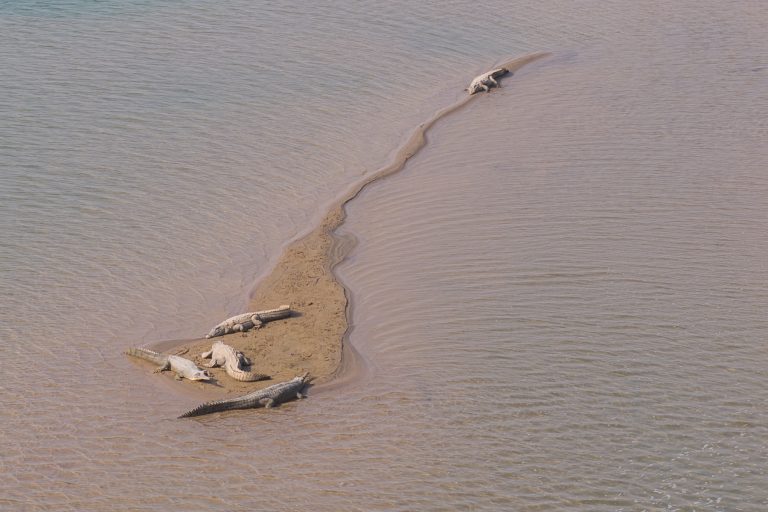
The figures are backed up by field observations that human disturbances such as sand mining and rock quarrying are more prevalent in the Narayani, which is also bound by a dam downstream in India, compared to the Rapti.
“This extraction over multiple years appears to have altered the river flow, diverting more water toward the Eastern Channel of the Narayani,” the study says, adding this may have reduced the suitability of the habitat.
“Severe flooding in June 2021 also impacted some habitats in the Narayani,” Khadka added.
However, the most pristine gharial habitat and the most stable population, according to the study, was reported in the Baguban-Tribeni stretch of the Narayani.
“The stretch represents a special case as this particular section of the river has core national parkland on both banks and human access is exceptionally difficult,” Bashyal said.
Besides its inaccessibility, the site is also protected by the fact that sand quarrying is illegal within the park boundaries. Researchers say they believe the area, home to two resident male gharials, retains its residents, who may move back and forth from time to time, as they find an undisturbed area to live in.
“The study shows that gharials likely prefer an undisturbed environment for them to live in,” Khadka said. “This has great implications for conservation as we look at the environmental impacts of different kinds of extraction and building of infrastructure.”
Another problematic issue related to the population of the gharials in Chitwan is the poor survival rate of juveniles and subadults released under the captive-breeding program, researcher Ranjana Bhatta, who wasn’t involved in the study said. According to the study, between the first and last surveys, 404 gharials were released into the river, but the overall population increased by only 80. The released gharials, Bhatta said, are getting lost in the system.
“Either their mortality is pretty high as they are not adapted to living in the wild, or they are washed away downstream to India and can’t swim back,” Bhatta, one of the brains behind the annual Nepal Crocodile Conservation Fair, said.
She added this is an issue that needs to be resolved quickly as a lot of resources have been invested in the captive-breeding program.
“One possible solution is to release the juveniles as [far] upstream as possible in the Rapti River, where their densities are high,” she said, adding that the population could recover even faster if the released individuals survive into adulthood.
This story first appeared on Mongabay and Onlinekhabar is republishing it under a Creative Commons licence.





